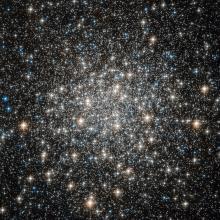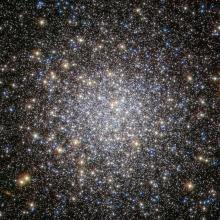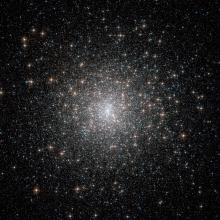Listen to today's episode of StarDate on the web the same day it airs in high-quality streaming audio without any extra ads or announcements. Choose a $8 one-month pass, or listen every day for a year for just $30.
You are here
Nesting Stars
Like a chick that’s left the nest, the Sun moves through the galaxy alone. But many of the galaxy’s stars are still in their nests — in great clusters of stars. All the stars in a cluster are members of the same brood — they were all born from the same giant cloud of gas and dust.
Two examples are near the tail of Scorpius, which is low in the south-southeast at nightfall.
The brighter one is Messier 7, to the left of the stars that mark the scorpion’s stinger. Under moderately dark skies, it’s visible to the unaided eye as a tight knot of stars. Binoculars reveal more stars, and telescopes reveal still more.
From the types of stars the cluster contains, astronomers deduce that M7 is about 200 million years old — only about five percent the age of the Sun. That youthfulness is one reason the cluster is still together. As a cluster orbits the center of the Milky Way, the combined gravity of the galaxy’s other stars and gas clouds pulls it apart. That sends its stars off on their own.
The other cluster, Messier 6, is above M7. It’s farther away than M7, so it doesn’t look as big or as bright. In fact, you need pretty dark skies to see it without help. With optical aid, the colorful stars of M6 form a pattern that resembles the outline of a butterfly. M6 is also young, so its stars are also still bound together by their own gravity — keeping the nest full for a little while longer.
Script by Damond Benningfield






